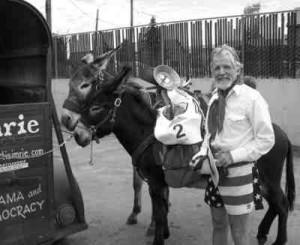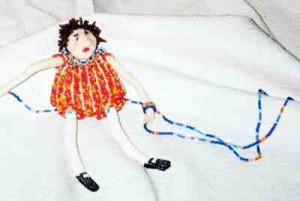Review by Martha Quillen
Art – May 2008 – Colorado Central Magazine
Drawings
by Mel Strawn
Published in 2007 by Create Space Publishing
ISBN 143481095X
DRAWINGS, by well known artist and educator Mel Strawn, who now lives in Salida, features work he’s “done over a period of 50 plus years.”
This collection presents a surprisingly diverse sampling of Strawn’s work — portraying animals, skulls, people, landscapes, abstractions, objects, and more, composed in France, Spain, Portugal, California, Colorado, and elsewhere with pen, pencil, ink, brushes, conte crayon, charcoal, chalk, ballpoint, casein, and other materials.
Drawings also includes brief comments by the artist.
Strawn’s drawings are deft, fascinating, and remarkably varied. Some are simple, whimsical, and appealing; others are stark, dark and menacing. From the artist’s own words, you can glean his fascination with structure, texture, and line. And from this collection you can see how he incorporates the forms of objects — such as skulls, autos, and tree roots — into complex abstractions.
Strawn’s explanations of his work are meager, and the art of drawing isn’t nearly as specific or definitive as language; so I’m not sure whether you can really understand the artist, or his ideas by simply viewing his art.
In fact, I know that I don’t grasp what some of Strawn’s slashing black lines represent. Or what his fanciful abstractions symbolize. But there is a wealth of feeling radiating from these images. This collection reminded me that drawing can be a profound form of self-expression — one that can speak without words or precise meaning.
Seeing all of the ways that Strawn can communicate — with sprightly lines, harsh shadows, curious textures, bright colors, a measure of cubism, and a dollop of black ink, to render images of dinosaurs, villages, motorcycles, people, places and things — made me sad that so many of us quit drawing in our youth.
It is, I think, a testimony to the educator in Strawn that this collection made me want to grab a sketch book, some wrapping paper, a pencil, crayons, pens and other materials and take up drawing myself.
Clearly, most of us will never be as apt at depicting a skeleton or a landscape as Mel Strawn. But his work shows that there is a lot more to the things we see around us than we generally notice. This book offers not only drawings, but also inspiration — to look more, to see better, to contemplate the world around us, and to create.


